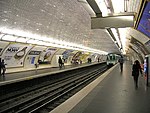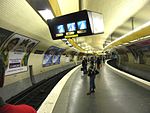Paris Institute of Statistics

Institut de Statistiques de l'Université de Paris (ISUP, roughly translated as "Paris Institute of Statistics" or literally to "Institute of Statistics of the University of Paris") is a graduate school of statistics based in Paris, in the fifth arrondissement. It offers specializations in actuarial sciences (finance and insurance), Biostatistics as well as industry and services. The ISUP is considered one of the most prestigious centers of learning of statistics in France, reflected in the number of job offers received regularly, the strength of its alumni network, and wages offered to its students out of school, which place it in the "top 15-ranked" French Grandes Ecoles Founded in 1922 by the mathematician Émile Borel, is the oldest and one of the most prestigious schools for statistics in France. The institute is currently affiliated to Sorbonne University and located on the campus of Jussieu.
Excerpt from the Wikipedia article Paris Institute of Statistics (License: CC BY-SA 3.0, Authors, Images).Paris Institute of Statistics
Avenue d'Italie, Paris 13th Arrondissement (Paris)
Geographical coordinates (GPS) Address Nearby Places Show on map
Geographical coordinates (GPS)
| Latitude | Longitude |
|---|---|
| N 48.8284 ° | E 2.3565 ° |
Address
Avenue d'Italie
75013 Paris, 13th Arrondissement (Paris)
Ile-de-France, France
Open on Google Maps











